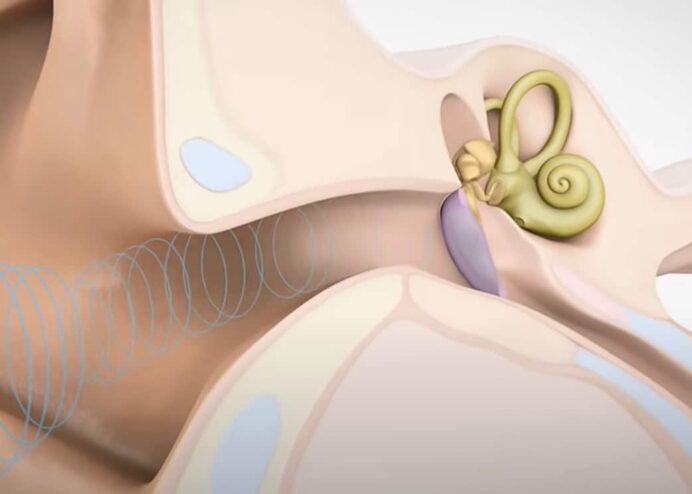
MED-EL
Published Apr 22, 2020
What Is Sound? What Is Noise?
Cochlear implants have come a long way since they were introduced in the 1970s. Some of the most notable advancements of the last few years have had to do with how the audio processor, well, processes sound: technologies like Wind Noise Reduction, for example. That wording sounds great, doesn’t it? “Noise Reduction.” But what is the noise, and how does it reduce it?

But before we can even get into talking about how the technologies work that reduce noise we have to take a step back. We have to define just what “noise” means, not to mention the broader question of what “sound” is.
What Is Sound?
Sound starts as vibrations: waves in the air that vibrate back and forth. But sound isn’t the same as hearing. It’s only when these vibrations reach your ear they are converted into electronic signals that your brain understands them as the sense of hearing.
Here’s a brief video that goes into a bit more detail:
Wind, for example, doesn’t have an inherent sound. It’s only when the wind bumps into a physical object and makes it vibrate that we are able to hear it.
What Is Noise?
All sounds are alike in this way: they’re just vibrations. There’s no physical difference between a noise and a pleasant sound.
What is different is how you as a listener respond to these sounds. Noise is simply any sound that you don’t want to hear.
Let’s continue with the wind example. If it’s a warm summer afternoon and you’re walking through a forest and hear the wind blowing through the trees, is that noise? Or do you enjoy hearing it? What makes that wind any different from the wind that keeps you from clearly understanding the person you’re having a conversation with? They’re both just sound vibrations.
What makes them different is that you want to hear one of those winds, and not the other.
Hearing professionals call this listener intent, which basically means that a single sound can be both “noise or “not-noise” depending on how you want to hear it.
Differentiating Noise And Not-Noise
Your brain is an amazing organ that can differentiate between noise and not-noise — and can automatically focus in on the sounds that you want to hear. This is because of listener intent. If you’re attentive to a certain person’s voice in a noisy situation, your brain zeroes in on their voice and can reduce the background noises.
Imagine that you’re sitting and watching TV, when someone comes up to you and starts talking. Which of these sounds—the TV or their voice—are noise? It depends on which one you want to hear. If you’d prefer to have a conversation with this person, it’s the TV that’s noise. If you’re focused on the show, it could be their voice that is the noise. Both of them are creating sound vibrations; your brain is able to determine which vibrations you want to hear and which one you don’t.
Reducing Noise
So what does this all have to do with technologies like wind noise reduction? It’s that sound processing technologies are designed to mimic how your brain works: to recognize which sounds you want to hear, and which ones you don’t.
How do they do that? Read more about that in this blog post.
References

MED-EL
Was this article helpful?
Thanks for your feedback.
Sign up for newsletter below for more.
Thanks for your feedback.
Please leave your message below.
Thanks for your message. We will reply as soon as possible.
Send us a message
Field is required
John Doe
Field is required
name@mail.com
Field is required
What do you think?
© MED-EL Medical Electronics. All rights reserved. The content on this website is for general informational purposes only and should not be taken as medical advice. Contact your doctor or hearing specialist to learn what type of hearing solution suits your specific needs. Not all products, features, or indications are approved in all countries.

MED-EL

MED-EL
.png)



